
The Mystery Of Atlantis Finally Solved?
Probably the greatest myths of all time, the ancient city of Atlantis has truly captured the imagination of thousands. Originally, this fictional island was created to represent the antagonist naval power mentioned in the Greek philosopher Plato’s literary work.
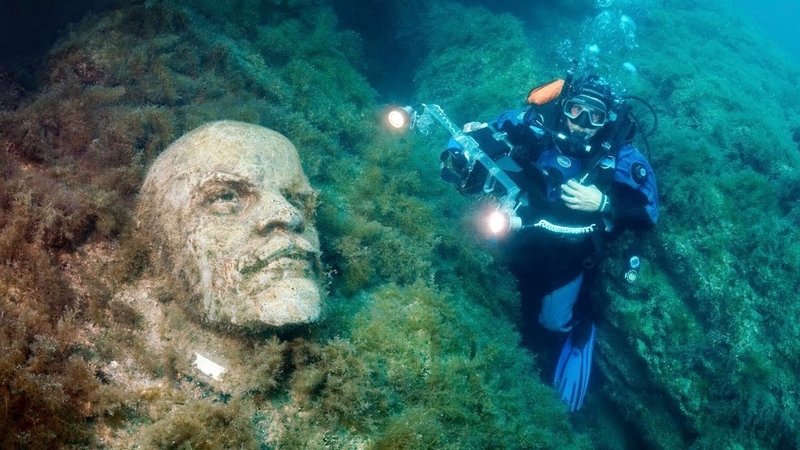
If this writing had not contained so much truth about the human condition, it would have probably just turned to dust. It isn’t a surprise then that people have come up with explanations that could make this island a reality. Read on to know the fascinating details!
New Evidence
This legendary island has truly mesmerized the minds of many for thousands of years.
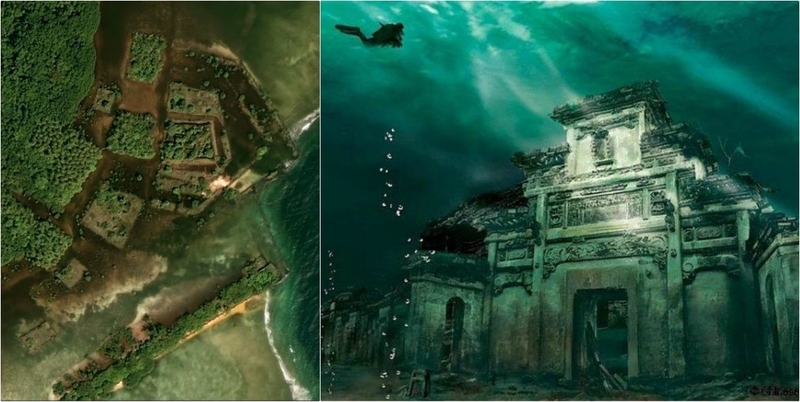
But what was originally just a story has now led to huge breakthroughs by professionals from around the world. These findings just might solve this mystery once and for all.
Intense Speculation
The city of Atlantis has long been the subject of intense speculation.

It all traces back to Ancient Greece as a story simply shared by Plato in 360 B.C. The story tragically ends in the loss of deities, and eventually the sinking of the city into the Atlantic Ocean. But how reliable are these ancient texts, really?
Connected Continents
Over a hundred years later, any information linked to the myth of Atlantis was considered incredibly speculative. Though, there have been professionals, such as cartographer Abraham Ortelius, that have made significant findings. Ortelius was actually one of the first to believe that all continents were connected before eventually separating.
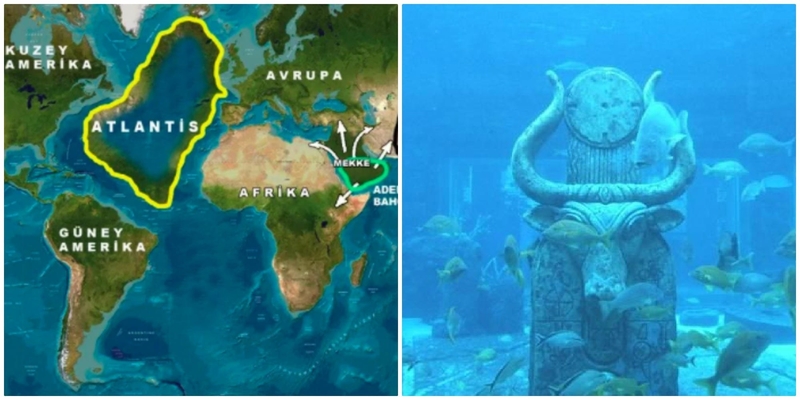
Ortelius shared, “Unless it be a fable, the island of Gadir or Gades [Cadiz] will be the remaining part of the island of Atlantis or America, which was not sunk (as Plato reports in the Timaeus).”
An American Theory
Like the island itself, the story of Atlantis eventually sunk into the depths of social and cultural understanding. However, a man by the name of Ignatius Donnelly revived the myth with his fervent interest. He dedicated much of his time and effort into even writing a book about it, containing extensive research.

Donnelly writes in his book, “Atlantis, the Antediluvian World,” that Plato was actually archiving a natural disaster. Was his research enough to back up this theory, though?
Pillars Of Hercules
Though Donnelly’s findings were predominantly speculative, his theory was largely directed by the belief that the Atlantic Ocean was just a couple hundred feet deep.
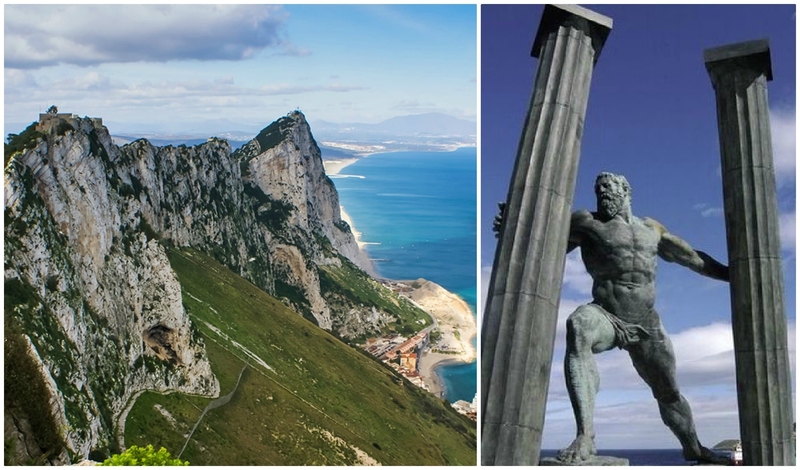
He thought that a continent had been flooded by colliding ocean waters in the location once written by Plato – just by the “Pillars of Hercules,” which are nowadays known as the two rocks at the entry of the Straits of Gibraltar. But is Donnelly’s theory still considered reliable after over a century of scientific developments?
Dated Theory?
Donnelly’s theory shares the same location with Plato’s description of the area of Atlantis, it still remains popular among a number of today’s theorists. Unfortunately, due to better understanding and knowledge of how plate tectonics work, this theory has since been debunked by modern oceanographers.
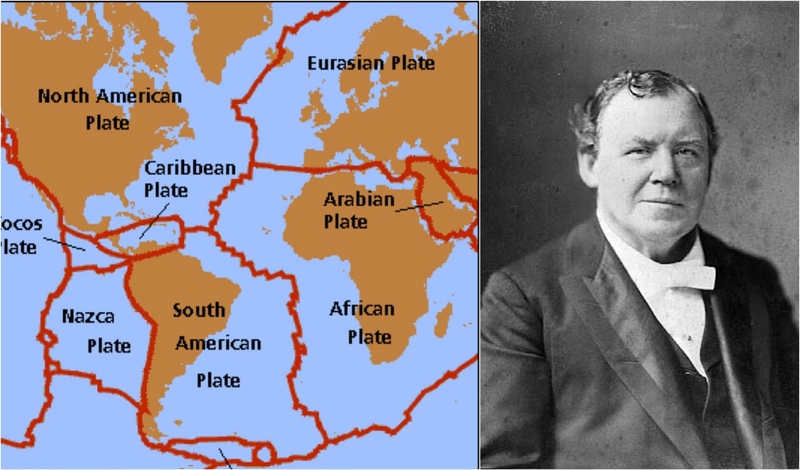
The whole idea of the waters shifting leading to the sinking of Atlantis ultimately seemed ridiculous at this point. However, this didn’t stop theorists from expanding Donnelly’s work.
Secret Society
Helen Blavatsky, a Russian mystic and founder of the Theosophical Society, was amongst those who were directly influenced by Donnelly’s work. Whereas Plato believed that the Atlanteans were purely a military entity, Blavatsky believed that they were actually a more culturally rich and sophisticated civilization.
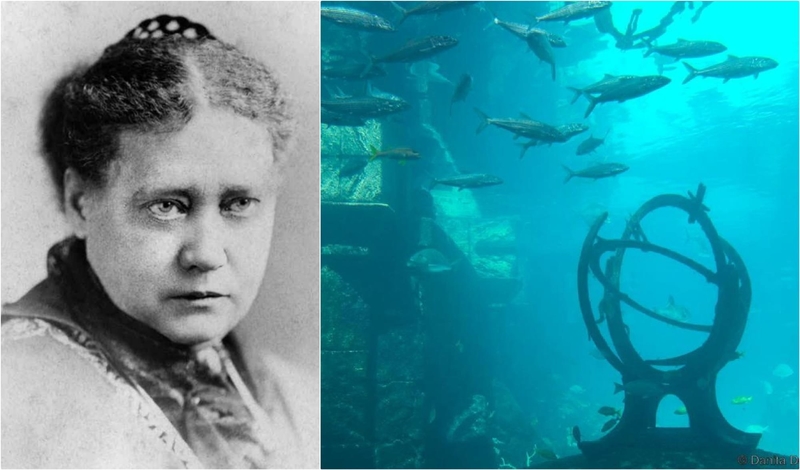
In fact, she even believed that her own race was deeply rooted in the Atlanteans, or what she called the “Root Race”. However, the Atlanteans contributed to their own downfall, engaging in one too many internal battles influenced by supernatural powers.
Dark Chapter
Blavatsky would have never imagined that her theories would create the kind of damaging repercussions they have today. After writing down her own beliefs in her book entitled The Secret Doctrine, it actually became an article of inspiration for the German Nazis. Mentioning the myths of Hyperborea, or a land that was home to a godlike race, Blavatsky contributed to the whole ideology of Nazism.

Though this was a dark turn in the pseudo-history of Atlantis, there were actually more impartial theorists that came along.
Next Generation
The next group of theorists actually started to contribute their own ideas of where they thought the city of Atlantis may have been located. Charles Berlitz, one of the most notable of those theorists, actually wrote several books about paranormal activity, eventually branching into the fantasy of Atlantis.

Unfortunately, his theory relied on information we could probably never have the means to clarify.
Bermuda Theory
You have probably heard of the Bermuda Triangle, the notorious area where many ships and people have mysteriously disappeared. It was in this location that Berlitz theorized the Atlantis had been situated.

This belief was backed up by the ancient-looking man-made structures and walls near the Bimini coast. Unfortunately, scientists debunked this belief after confirming that these structures were actually natural rock formations.
Atlantis Is Antartica?
Charles Hapgood was the American professor who proposed another theory that had gathered just as much speed as Berlitz’s ideas did. However, what he wrote in his 1958 book, Earth’s Shifting Crust, focused more on the belief that severe catastrophes were led by a pole shift.
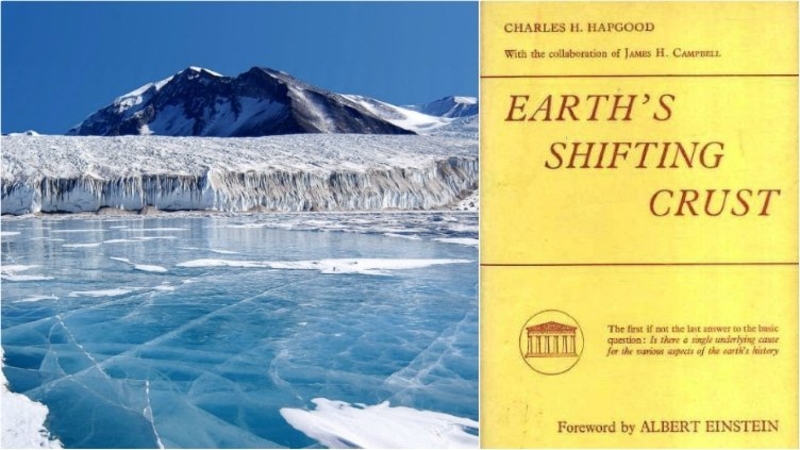
Although, Hapgood included a suggestion that Atlantis may have been the temperate version of Antartica. How could he have come up with such an idea?
HapGood Reason
Hapgood’s claim was that a huge mass of land, now Antartica, was displaced over time after a shift in the Earth’s crust over 12,000 years ago. He believed that this temperate region was home to a particularly advanced civilization, who he claimed could have been the Atlanteans.

However, he assumed that the people were forced to flee from the area when ice eventually covered the continent. Though, scientific advances debunked this theory yet again, forcing theorists to go back to the drawing board.
Stranger Than Fiction
Among all theories trying to explain the possibility of Atlantis, there was one that sought to disprove the city ever existed in the first place. It was theorized that the real-life event of the Bosporus Strait flooding into the Black Sea, or famously known as The Black Sea Flood, inspired the Atlantis myth.

In an instant, the catastrophe destroyed the lives of many living in the region.
Check The History Books
Amidst the vagueness, we can get some facts straight regarding the city of Atlantis by simply looking at the history surrounding Ancient Greece. It was found by historians that the story of Atlantis pretty much revolves around a group of people who existed between 2500-1600 B.C., called the Minoans.
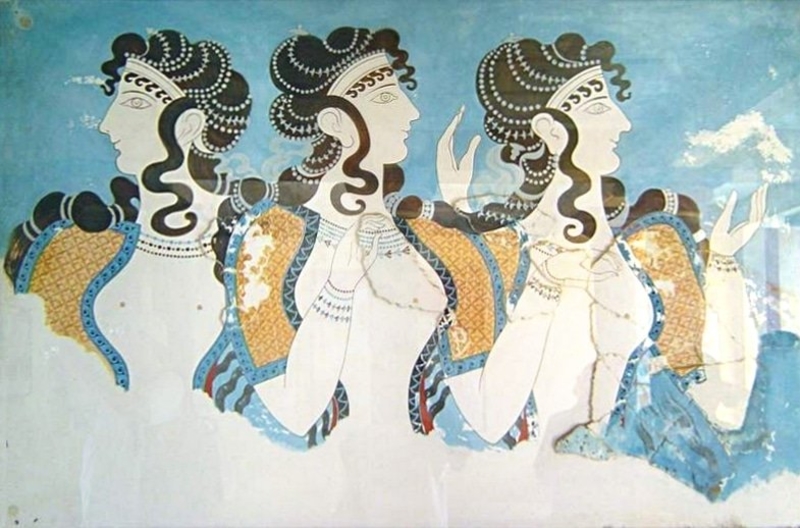
They were the first true European civilization that built extravagant structures, making it difficult for theorists to ignore the Atlantis connection. However, something mysteriously happened to them.
Vanished Overnight
Apparently, in a matter of moments, the Minoans vanished off the substance of the earth. Thus, numerous theorists have frequently observed a relationship between this civilization’s bizarre vanishing and the mysterious idea of Plato’s story.

Though, late hypotheses guarantee that a seismic tremor struck the island of Thera (now known as Santorini) more than 3500 years back. Specialists trust that the tremor caused enormous waves that devastated everything in their sight. In any case, who came up with this hypothesis? What’s more, how accurate is it?
Is It True?
It was Greek archeologist Angelos Galanopoulos who concocted the idea towards the end of the 60s. Albeit many trust that he should not be right basically because of the fact that the dates don’t arrange, he had a clarification for this.

Evidently, when the story was first being deciphered, the defective Egyptian translation made it appear as though the occasion happened 9000 years ago when, in reality, it was most likely more like 900. Nevertheless, Angelos’ hypothesis was proven wrong since Plato composed that Atlantis was near ancient Gibraltar.
Another Thera Theory
One historian who shares a comparative theory is Bettany Hughes. The specialist in traditional history trusts that there is an excessive number of similarities between Plato’s record and the catastrophe that happened on Thera.

In fact, she wrote, “Plato describes the Atlantean buildings as being red, black and white – as indeed the masonry at Akrotiri strikingly was (and still is).” The record “also talks about the city encircled by rings of land – the formation of the collapsed volcano.”
Location Location Location
One of the key insights about Atlantis that has been the subject of exceptional discussion is where exactly the old city could have been. J.M. Allen, a photograph interpreter, actually believed that Atlantis could be in South America – specifically, Altiplano, a zone near the Bolivian Andes.

However, it was the well-known mystic Edgar Cayce who trusted that Atlantis could be discovered near the Bimini coast. Other potential areas incorporate Southern Spain, the Azores, and even Morocco.
Psychic Powers
Not only did Edgar Cayce claim that he could heal people, but he was also believed to have an incredible ability to “connect” with people who lived in Atlantis. He was reportedly able to write detailed accounts of his “experiences” in the ancient city through his psychic powers.
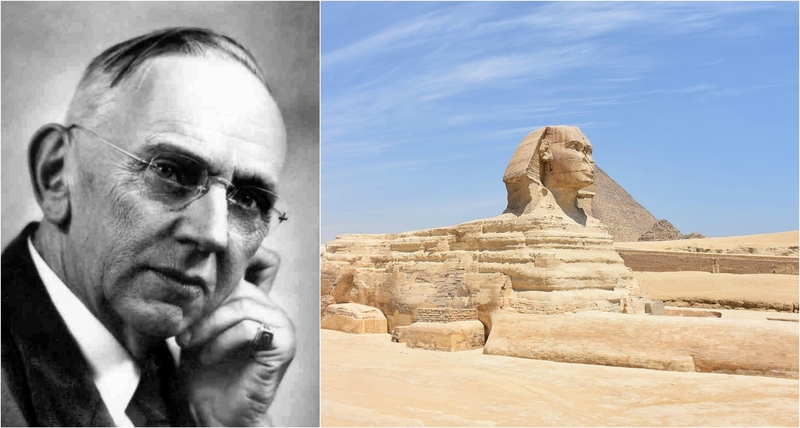
Other wild claims he made included the bizarre idea that Atlantis would “rise” again in the 1960s and that there were archives of Atlantis information stored under the Sphinx in Egypt.
Missing The Point
After continental drift became an uncontested fact, scientists have repeatedly questioned the work of Plato and whether or not Atlantis really exists. One scholar named Julia Annas said, “The idea is that we should use the story to examine our ideas of government and power. We have missed the point if instead of thinking about these issues we go off exploring the seabed.”
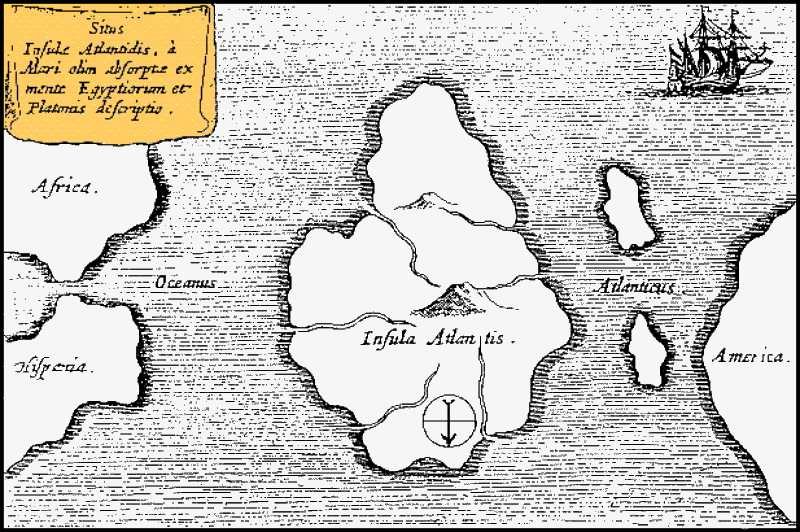
This was considered a wake-up call to many Atlantis theorists who subsequently had to reassess their research techniques.
Cultural Marvel
In the modern age, the enigmatic quality of the story of Atlantis captured the fascination and imagination of millions, with the concept of an underwater city in a variety of mediums.

Many films have revolved around the myth, like the animated film Atlantis: The Lost Empire by Disney and the documentary Atlantis by Luc Besson. Additionally, the myth was used in the comics stories of Marvel and DC. However, it was actually the search for the ancient city that has sparked the greatest interest.
Original Or Not?
The originality of Plato’s works surrounded much debate. Many believe that he borrowed from the history of Gyges’ allegories and ideas. Although, others theorize that he was actually inspired by a variety of sources, such as the invasion of the Sea Peoples and the war of Troy.

The only possible inspirations for Plato at the time were real-life events like the destruction of Helike in the fourth century BC. However, there are still those who insist that his work was entirely original.
Was It The Mayans?
Many scholars eventually proposed a theory that was frightened by the masses. Mesoamerican theorists like Charles Etienne Brasseur de Bourbourg and August Le Plongeon elaborated detailed theories to suggest that either the Mayan or the Aztec civilizations had something to do with the creation of Atlantis.
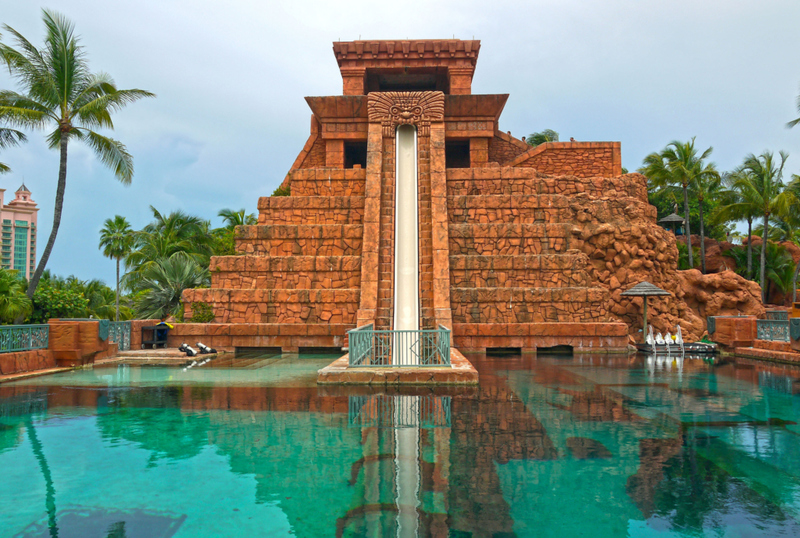
The former traveled to the region in the 1800s and had what he thought was sufficient evidence after translating Mayan texts such as Popol Vuh.
A Huge Risk
Due to his unconventional theories, the reputation of Brasseur De Bourbourg has been greatly tarnished. This was mainly because he suggested that the Mayans were descendants of a people called the Toltecs, which he claimed to be the superior race that created Atlantis.
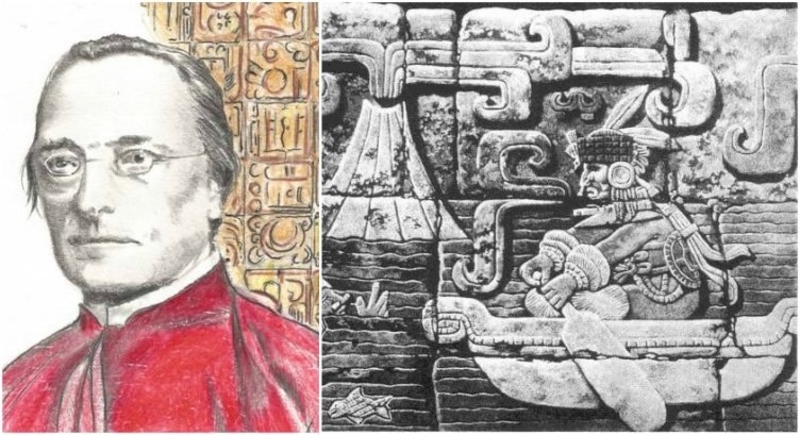
Though his depictions provoked and entertained the general consensus, scholars found his work purely speculative and deeply rooted in fantasy. Distinctly contrasted to these theories, one person’s findings have recently been more credible.
African Atlantis
In recent years, there have been few and far-reaching concrete claims to the city of Atlantis. One exception was in 2015, when Michael Hubner, a German computer expert, theorized that Morocco was potentially home to the ancient ruins.
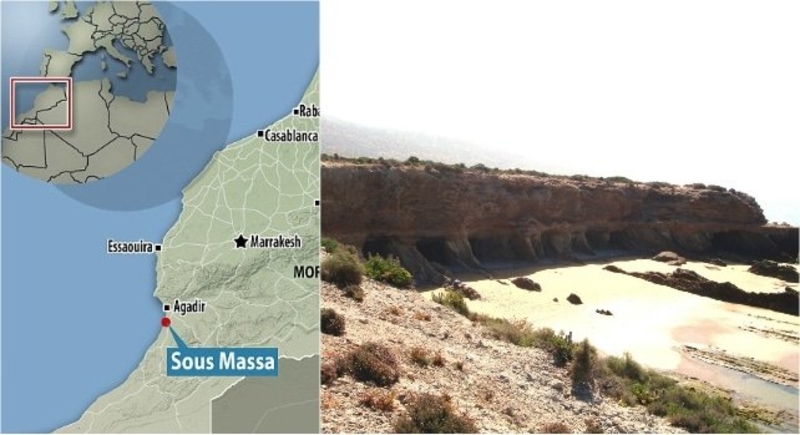
After collecting information from Plato’s accounts and highlighting all the areas within a 3000-mile radius of Athens, Hubner’s search eventually led him to the North African country. Although, one might wonder what could have led Hubner to such an undirected country…
Atlantis Algorithm
What made Hubner’s work so unique was that Hubner used computer technology to calculate where Atlantis could be, unlike others who would usually choose their location first and then build evidence around it.

In fact, he took 51 attributes of the depiction of Atlantis by Plato, such as being close to the sea, outside the “Pillars of Hercules” and having elephants. All 51 boxes were ticked by the country of Morocco. It was only two years later, however, that archeologists have made the most serious discovery to date.
New Breakthrough
Archeologists have recently discovered an ancient city that many theorists believe could actually be Atlantis in their amazing breakthrough. Though, one detail was completely unexpected- it was located in the Pacific Ocean. New aerial photographs show clearly Nad Madol on the island of Pohnpei.
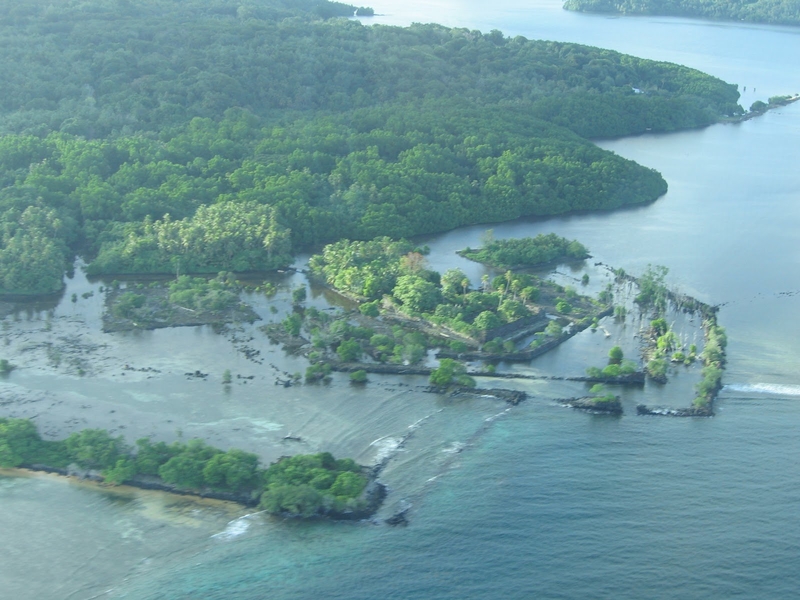
The team of researchers who traveled to the site found that the ruins were originally built over a lagoon. But what distinguishes this archeological site from the others? And why was it linked to the city of Atlantis?
Could It Be Atlantis?
What fascinated people most was that this newly found site had tidal canals and walls around, similar to what Plato wrote all those years ago. Nan Madol’s structures are supposed to be constructed from 750,000 tons of black rock.

Interestingly, the name Nan Madol means “spaces between,” which directly refers to the canals that flow through the ruins. Atlantis or not, it’s an incredible finding…
Game Changer
The research team’s leader is a man named Mark McCoy. According to the proud archeologist, the discovery was an incredible game changer, despite speculations of it being or not being Atlantis.

McCoy shared, “It now looks like Nan Madol represents a first in Pacific Island history. It was the seat of political power, the center of the most important religious rituals, and the place where the former chiefs of the island were laid to rest.”
Raiders Of The Lost Tomb
McCoy and the team investigated one of the graves in which the chiefs were buried. In this way, they could determine a clearer date for the original construction of the ancient town. McCoy said, “With the results described in our new paper, [it] can now be compared to other islands in the Pacific and societies around the world.”
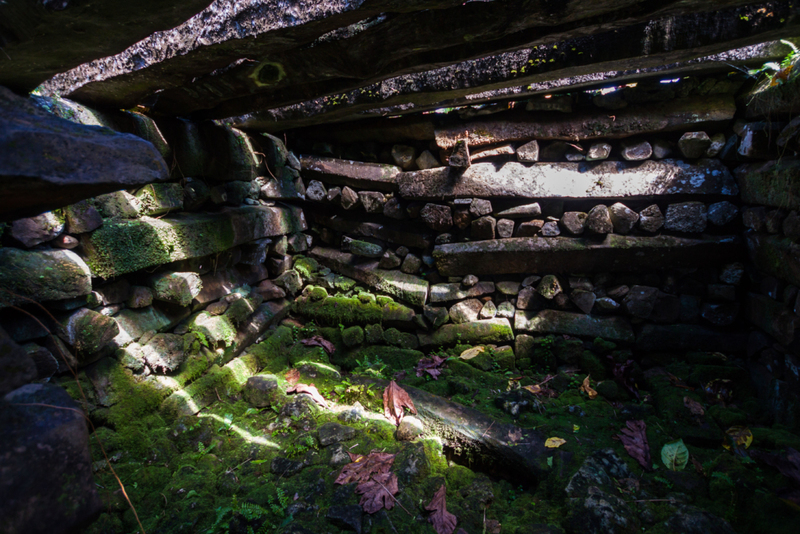
These findings are truly phenomenal contributions for further research into Atlantis. But who lived in this city, anyway?
Already Found?
Nan Madol may not be Atlantis, but then again, no confirmation is given that it is not. And even if it isn’t, this doesn’t change the incredible features that this team of archeologists has in uncovering something this special.

These discoveries encourage researchers to double their efforts to finally find the ruins of one of the most mysterious wonders of an ancient civilization– the Atlantis. Who knows, perhaps it’s already been found, and we just don’t know.
Groundbreaking Evidence
Now, we move onto other groundbreaking discoveries. The Giza Pyramids are no less than an architectural phenomenon and have disturbed historians for thousands of years.
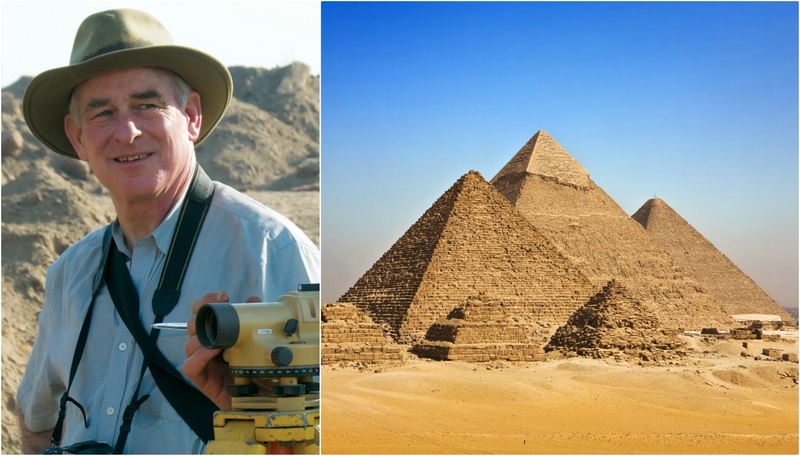
A group of archeologists, however, found new evidence that once and for all solved the mystery.
Finding The Truth
Over the years, the legends of ancient Egypt captured the imagination of millions, with many people dedicating their lives to revealing the truth of these mysterious pyramids.
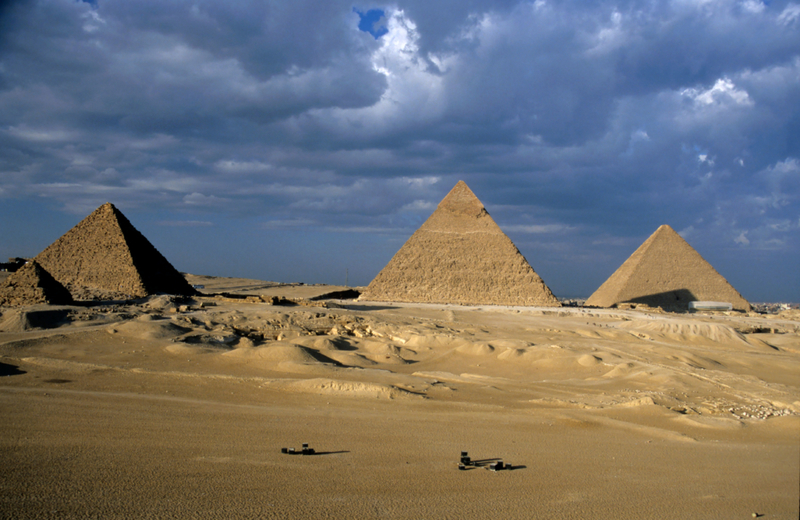
Many of them have theorized how the magnificent structures were created, with the three main arguments about whether the blocks used to build them were lifted, rolled or dragged to their planned place. There was one group of people, however, who had the most convincing theories.
The Most Reliable Information?
Herodotus’s accounts of the construction of the pyramids are actually still considered to be some of the most reliable documents surrounding the subject, despite being written more than 1,600 years after they were built.

Although Egyptians have collected information long after the era, it is the most useful information we have ever known. Over time, however, many critics have become increasingly skeptical of his work, as they believe that it only gives one dimension to a multifaceted story.
Best Of The Best
For a long period, there were certain details that many Egyptologists and historians agreed on regarding the historical context of the building. The general consensus was that the Pharaohs ordered the building of the structures and hired the most respected architects and engineers of their time to supervise the preparations.
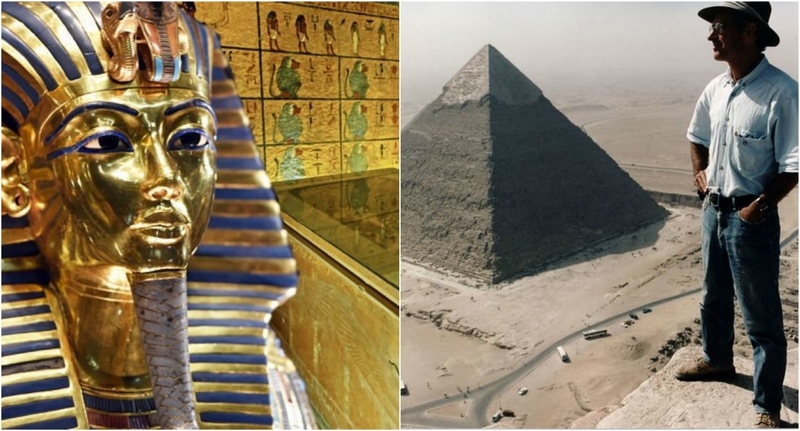
Although, it was the slaves who were ordered to do hard work. Another popular belief has something to do with the building techniques that were implemented.
Construction Techniques
Once again, research on the matter still wasn’t as simple. Theorists had conflicting ideas about the conditions under which the pyramids were constructed. However, many share similar details, particularly some of the techniques which the builders believed to have used.
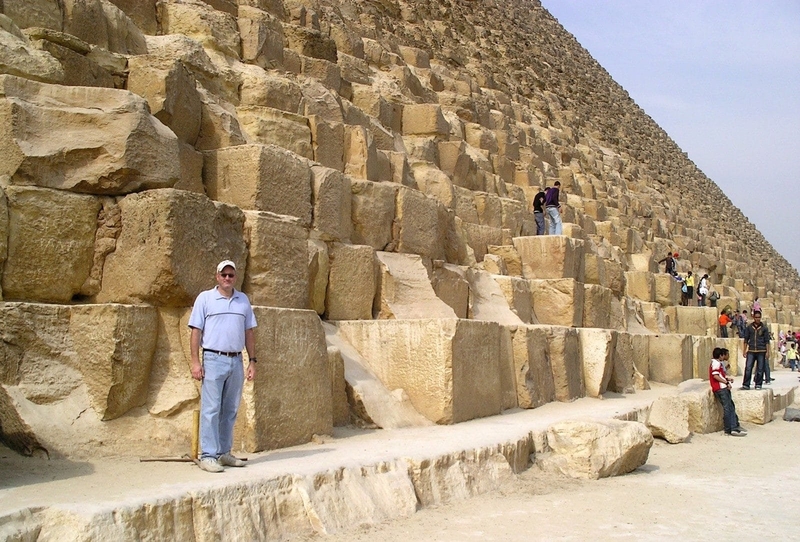
The main similarity is the idea that workers meticulously used a copper chisel to carve boulders. The final product was then dragged and lifted when the supervisor found it fit. Though, is there any chance it wasn’t the Egyptians? Could anyone else have built them?
Hebrew Slaves?
The early signs regarding who may have built the pyramids can be traced back to Biblical times wherein the Israelites were enslaved in Egypt, written in the book of Exodus. While this suggests that the Hebrews might have been ordered to build the pyramids for the Egyptians, historians will quickly address this misunderstanding.
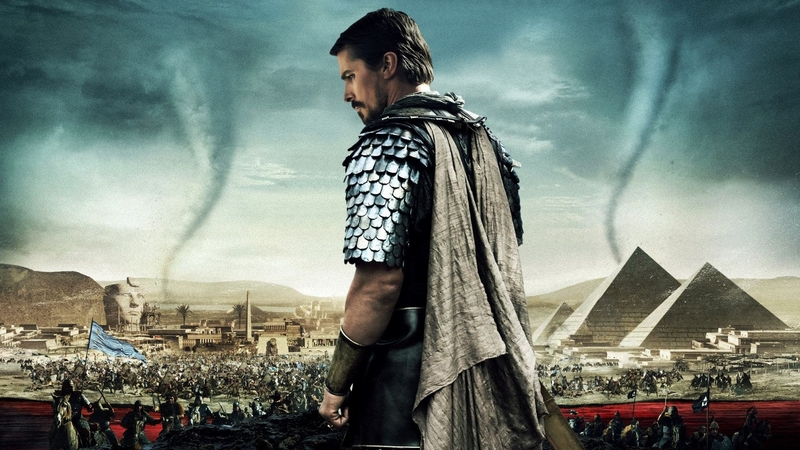
Although the Giza pyramids were built about 2580 BC according to most archeological research, the Israelites were not slaves until the 13th century BC. Yup, these numbers don’t seem to add up.
Secrets Of The Sphinx
Although there is an enormous amount of evidence that it was the Egyptians who built the pyramids, there are still signs that they could have actually been built long before the Pharaohs. In fact, authors and historians Gerry Cannon and Malcolm Hutton believed the Sphinx had to be cut out of natural rock.
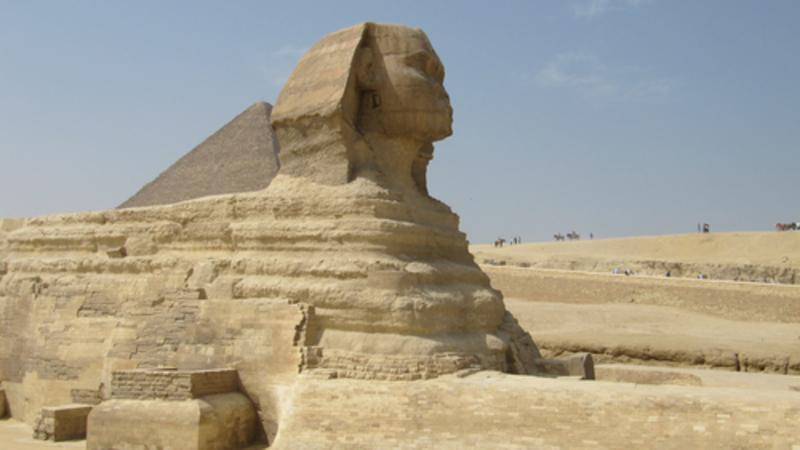
“You can’t carve a rock when it’s under sand” said Cannon. He added, “When it was not under sand was about 12,000 years ago and the Egyptians weren’t there.”
Was It Really The Egyptians?
These findings could mean that the old structures were much older than originally anticipated by archeologists and that an earlier civilization could have built the pyramids.
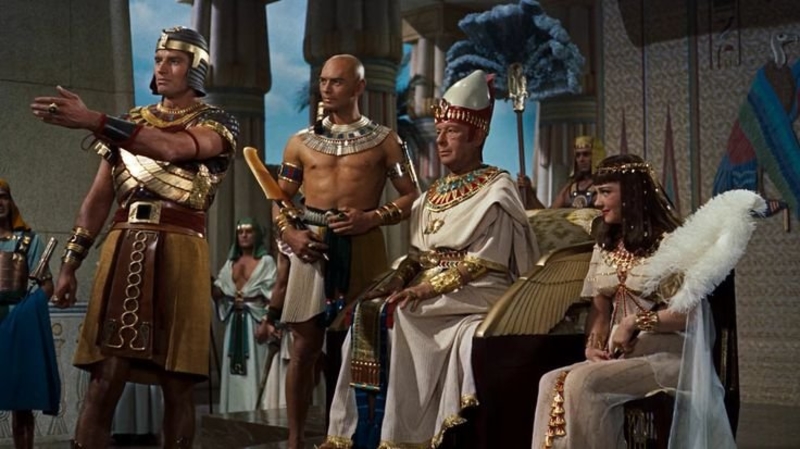
Cannon said, “Nobody knows who was there 12,000 years ago. It had to have been done by a civilization that was more advanced than any of us.” Of course, the wild theory of the pair was quickly shot down by Egyptian authorities. This does not mean, however, that there weren’t more logical theories circulating.
Pyramid Of Power
One of his generation’s most respected Egyptologists, Miroslav Verner, theorized that a hierarchy had to be established to create the pyramids. He trusted that there were probably more than 100,000 men divided into a variety of teams with different purposes.
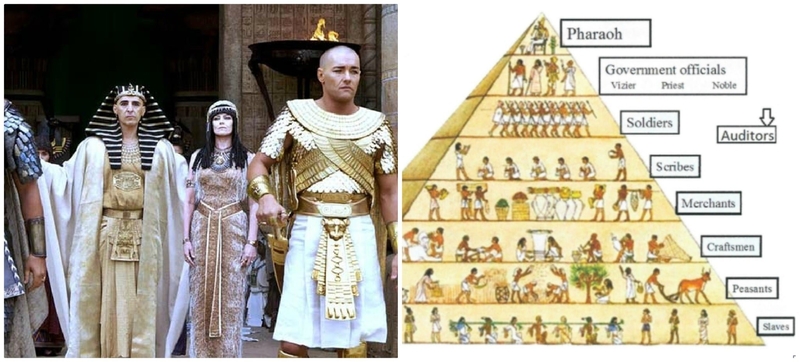
Additionally, more divisions were made related to individual skills. The theory meant that those who built the pyramids had roles that were organized in a pyramid style. But the intricacies of the Egyptian operation still went on.
Master Plan
Yet another Egyptologist by the name of John Romer believed that careful planning led to the construction of the pyramids, to the point that the builders have probably drawn up an actual life-size plan.
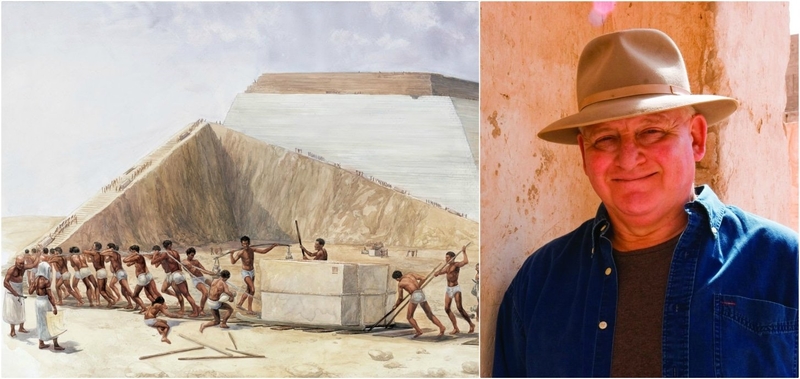
He said, “Such a working diagram would also be used to create the pyramid’s architecture with unrivaled precision by any other means.” Romer also estimated the construction was probably 14 years from beginning to end. Although, another man took this inquiry to the next level.
Game Changer
In modern times, a modest man named Mark Lehner is one of the most important people in the quest for the truth behind the pyramids. The experienced Egyptologist and his team have compiled one of the most detailed studies ever carried out with some fascinating new theories.

Lehner thinks that people were involved in the construction of the pyramids somewhere between 14,500 and 40,000. But actually, he did not realize how vital his role in this search would eventually become.
Khufu’s Ship
The catalyst that launched this abundance of evidence came back in 1954 when archeologist Kamal el-Mallakh led a team and discovered a boat that they thought was left for the use of Pharaoh Khufu.

The remains of the boat have been restored and scanned to determine its origins, including its wooden planks. Remarkably, the findings showed that they were sewn together. So what was the actual purpose of this ship?
Sailing To Heaven?
It was in 2500 B.C. that servants sealed the ship in a pit at the Great Pyramid complex. This enabled Pharaoh Khufu to use the necessary tools and grave goods in the afterlife.
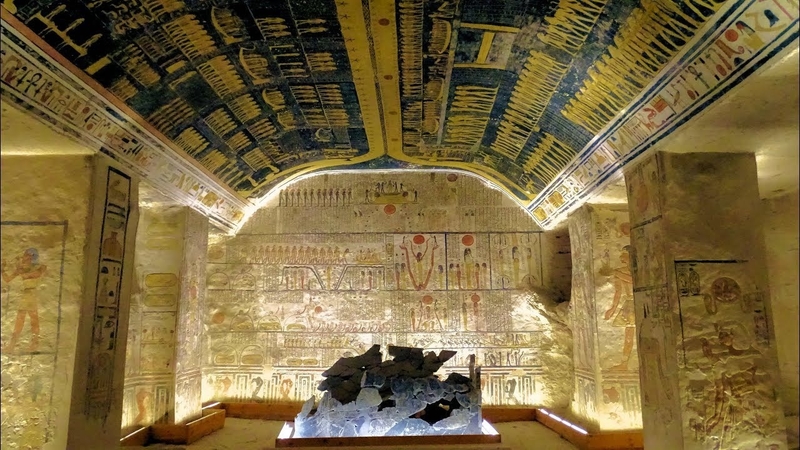
Although this is not confirmed, the vessel is called a “solar barge,” a ship designed to take the resurrected king with Ra, the Sun God, on his eternal journey. However, most theorists believe it was due to another reason.
Down To Earth
Since the signs indicate that the vessel was already submerged in water, theorists believe that it was already used to escort the mummified body of the king to his resting place. It was either that or Khufu used the ship as a mode of transport to holy places while he was still alive.
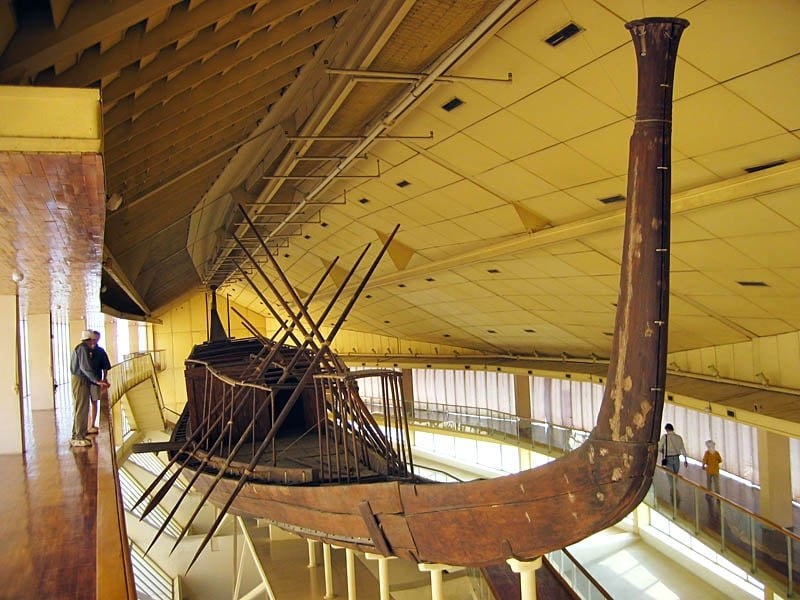
Whatever the reason, the Khufu ship is considered one of the most important findings in Egyptology’s history. But recent developments have greatly altered this.
Pandora’s Pyramid
A particularly fascinating truth that was recently revealed about the Great Pyramid is in fact within the ominous structure. Recently, after intensive scanning, scientists found a mysterious void deep inside the pyramid.
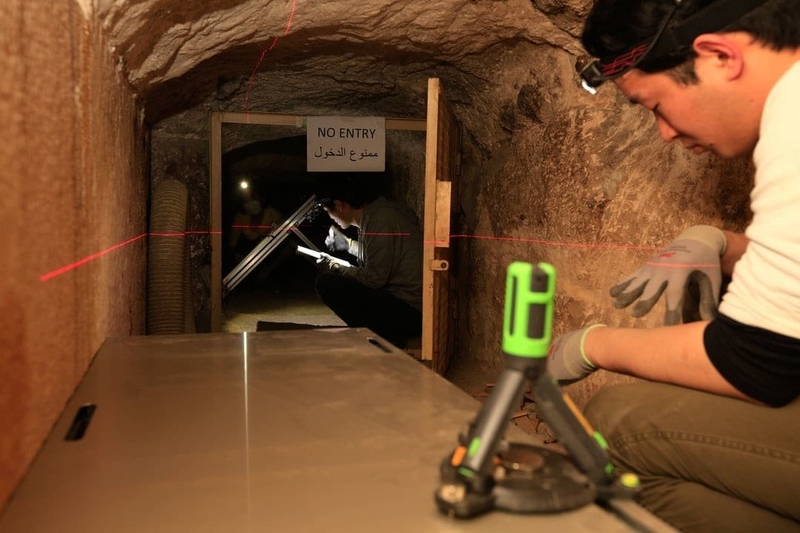
Above the Queen’s chamber is a 30-meter gap that looks like a kind of corridor or transport system. Though the exact purpose of the void is still unclear, there are still some theories about what the void might have been designed for.
Complex Structure
What most people may not know is that the Great Pyramid actually has a sophisticated interior. As of today, it is believed that there are three recognized chambers; the lowest one built within its bedrock, the chambers of the Queen and the King, and the exterior complex that speaks for itself.
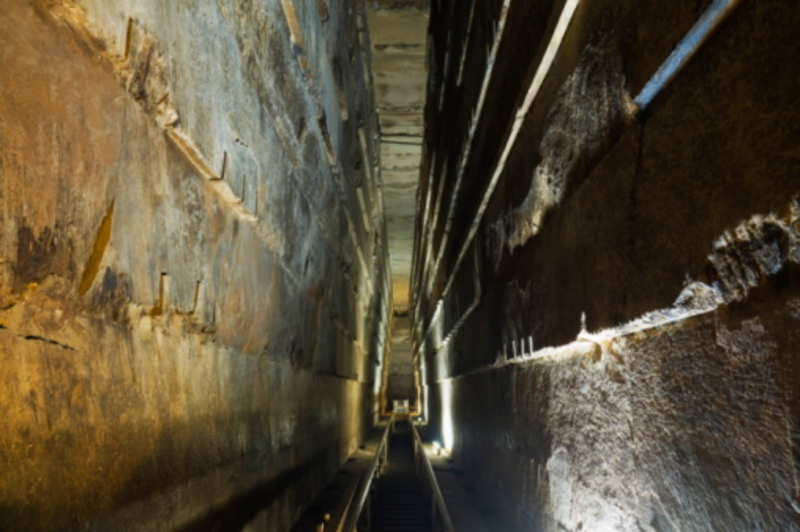
Giza consists of two mortuary temples to honor Khufu, while there is also a “satellite” pyramid and a series of tombs around it.
Power Of The Nile
It may make sense that the Pyramids of Giza could have been built so close to the Nile because any civilization would find being close to a source of water to be an advantage.
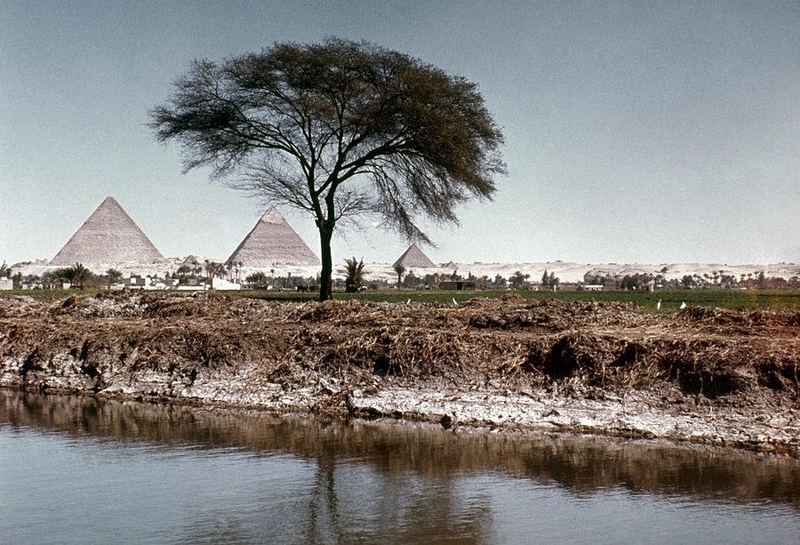
It is believed, however, that there was a much more spiritual reasoning behind this placing. Supposedly symbolizing the realm of the dead, the Pyramids of Giza were located on the west bank of the Nile, exactly where the sun sets.
Cooler On The Inside
It is indisputable how the Egyptians actually were ahead of their time. This can first be seen in the finding that the structures were constructed using a ball and socket mechanism to prevent earthquake damage.
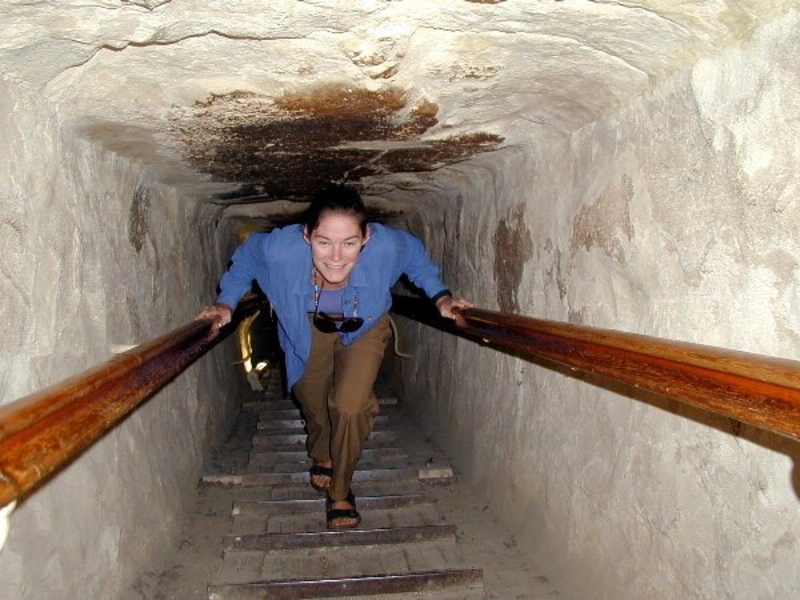
Secondly, the pyramids were built so accurately that, although the harsh arid heat would be on Egyptian structures, the temperature inside the pyramids remained cool at 20 degrees Celsius.
What Came First?
In the main chamber of the Great Pyramid, there is a granite coffer. What appears to be an entirely normal feature of this type of structure is actually something extraordinary. The reality is that the coffer is, in fact, a finely carved granite piece.
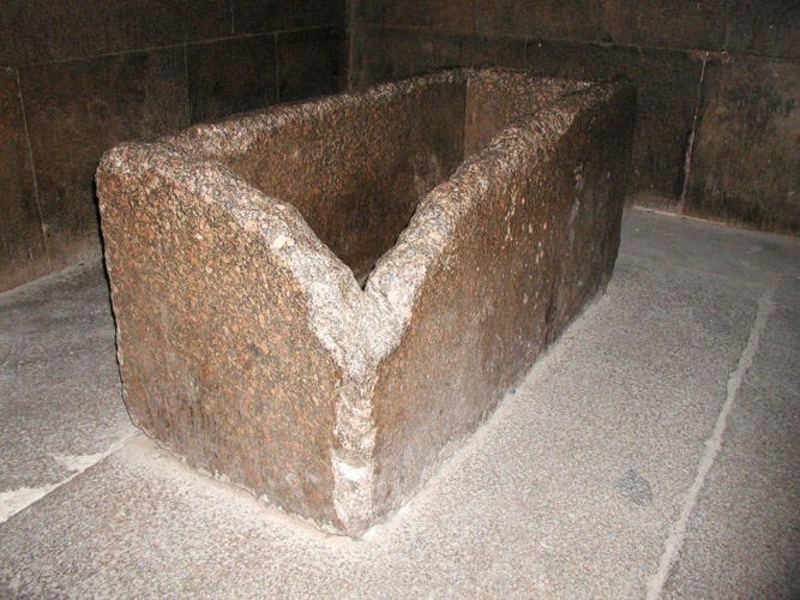
It was not possible for the Egyptians to fit the large piece through the passage, suggesting that the Great Pyramid could be built around the coffer instead of the other way around.
Mysterious Mortar
One of the greatest mysteries around the Great Pyramid is the mortar which was used to “glue” the blocks. The truth is that no archeologist has traced the origins of this mortar or the material used to make it to this day.
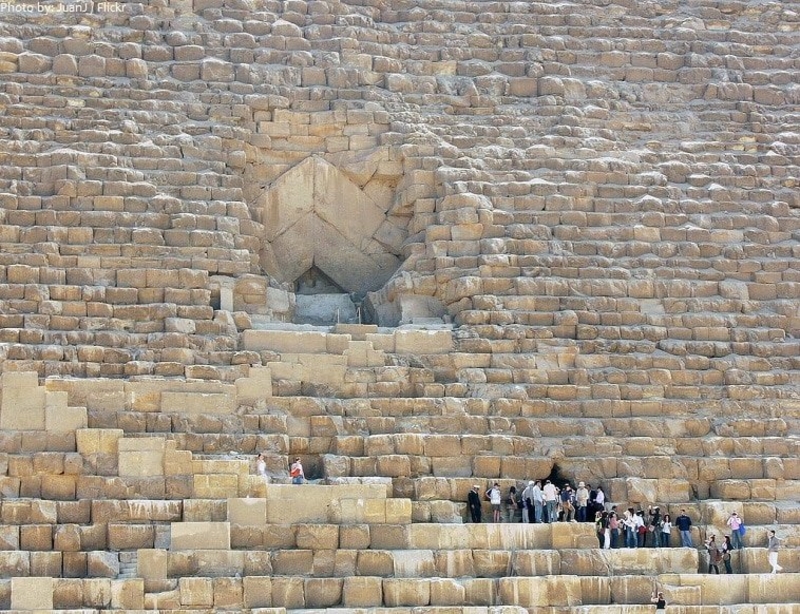
The only thing scientists know for sure is its chemical composition. Though they couldn’t reproduce the composition, it is believed to be harder than the actual stone.
Royal Rooms
Two of the most common theories are at completely opposite ends of the spectrum. The first theory is worldly in nature, suggesting that the void acts as a “construction gap” and a platform for builders to move from one part of the building to another.
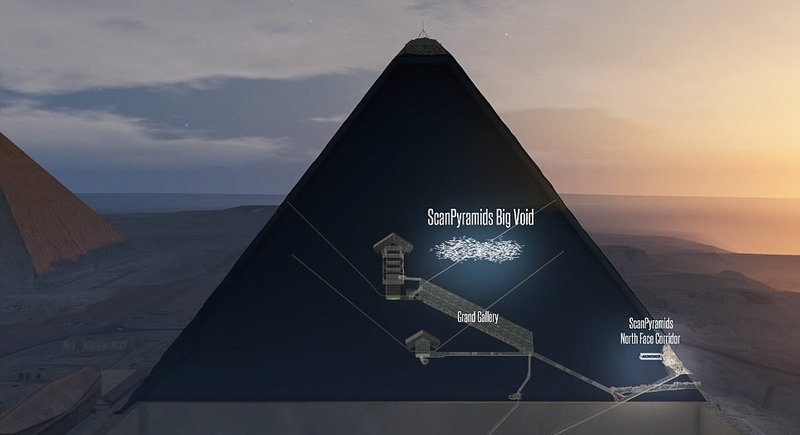
However, the second theory suggests that it was the path between the chamber of the King and the chamber of the Queen. This could also suggest something else.
Attracting Millions
In one way or another, hardly anyone seems to be able to resist the attraction of the Giza Pyramids. Most people fall into one of two categories: a qualified Egyptologist who is determined to unlock the truths of these mysterious structures, or someone who has Egypt on his bucket list to visit Giza in particular.
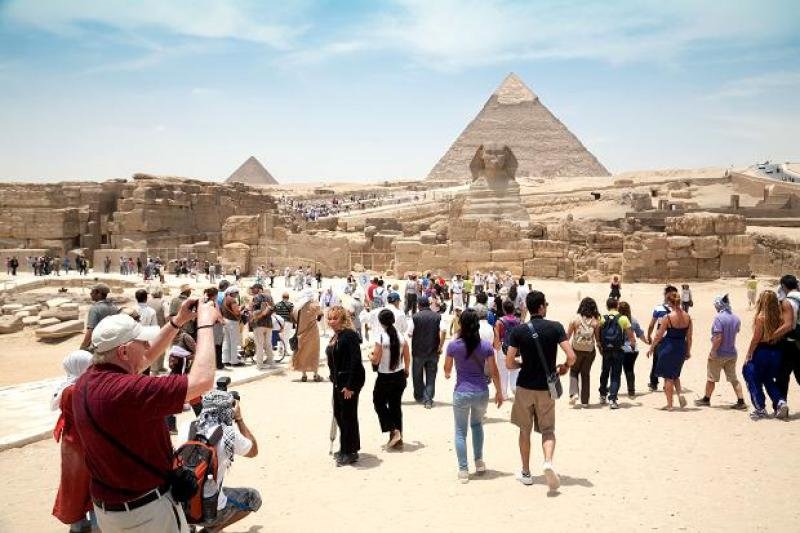
The Great Pyramid of Giza is without a doubt the biggest reason why Egypt can attract more than five million visitors a year.
Throne From Space?
A Milan Polytechnic professor believes that a throne carved from a meteorite is stored deep within a secret chamber in the Great Pyramid. Since the dagger of King Tut was found in 1922, it has been well documented that the Ancient Egyptians used meteoric iron.
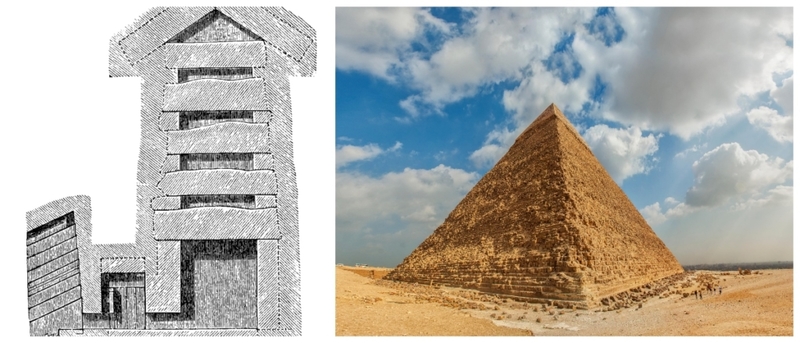
“In these texts, it is said that the pharaoh, before reaching the stars of the north, will have to pass the ‘gates of the sky’ and sit on his ‘throne of iron’,” said Giulio Magli.
Pyramids In Pop
The Pyramids truly captured the imaginations of millions and inspired many artists to use them on a range of platforms in their work. Many films used the Pyramids as the background for some of the most iconic film scenes, including The Mummy, Lost Ark Raiders, and Stargate, to name a few.
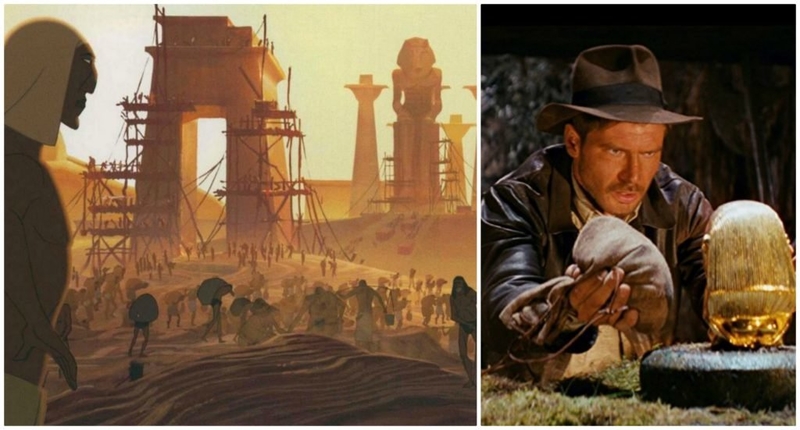
There was also the animated musical The Prince of Egypt, which drew heavily from the perspective of the Bible around the time of Ancient Egypt.
Be Our Guest
One of the latest developments has shed new light on Ancient Egypt’s overall culture. University College London researchers have evidence that the Egyptians would only enter the pyramids if they had guests.
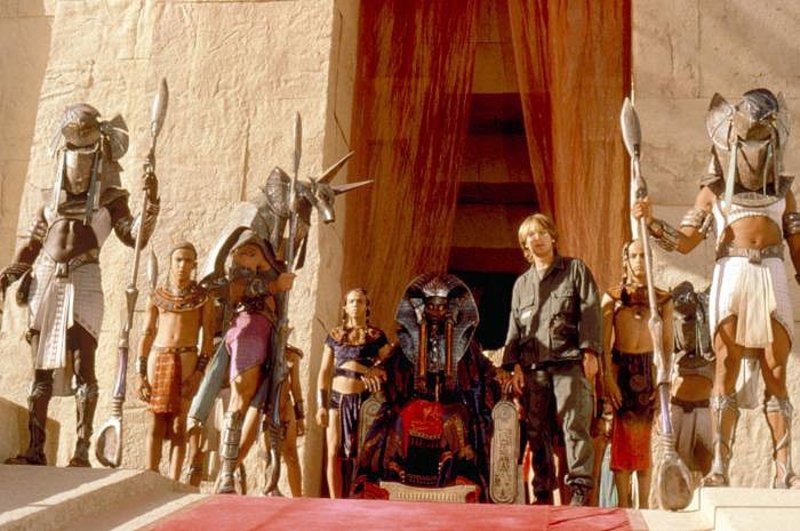
According to Professor Sidney Colliver, “Recently unearthed papyrus rolls dating from 2400 B.C. confirm that most Egyptians of the time went to the pyramids of Giza once as a kid and thought they were pretty cool, but seldom returned to the majestic tombs unless they had a buddy visiting who had never been there before.”
Grand Theft Pharoah
One of the misfortunes that prevented Egyptologists from getting a full picture of what it was like to live in the Pyramids was their historic illegal activity. Apparently, “all the pyramids were robbed” by the New Kingdom, according to authors Briar and Hobbs.
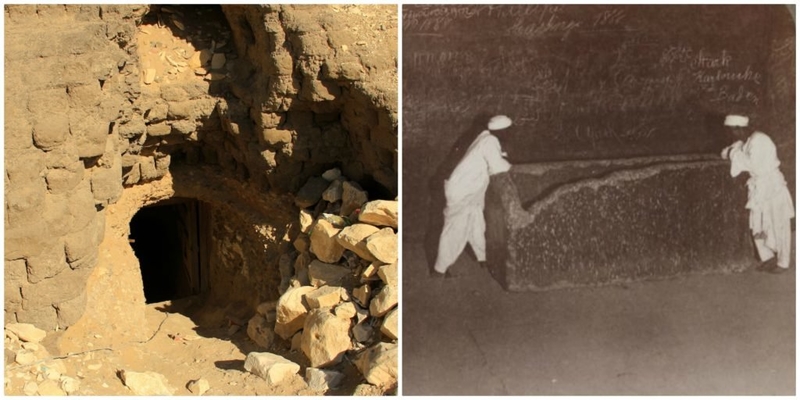
It is also thought that stone was taken at some point, serving as a slope to the foundations of the Great Pyramid. Unfortunately, numerous robbers broke in towards the end of the Old Kingdom.
Man With A Plan
Remarkably, Mark Lehner made many pyramid-related discoveries. His team found a working town known as ” The Lost City” by the archeological community. He also found what originally seemed to be a nearby port, making it clear that the region was much more integrated than previously anticipated by the masses.
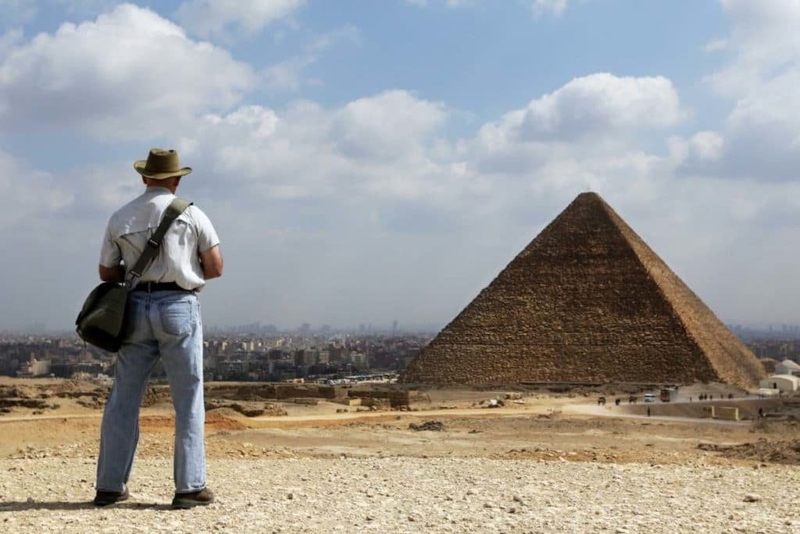
Lehner also believes that pyramid workers could have lived on the ramps they used to build and park near the site.
Discovery Of The Century
When an ancient papyrus was found in a cave in Wadi al-Jarf in 2013, a remarkable discovery was made. They are the oldest of their kind ever found, from just over 4,500 years ago.
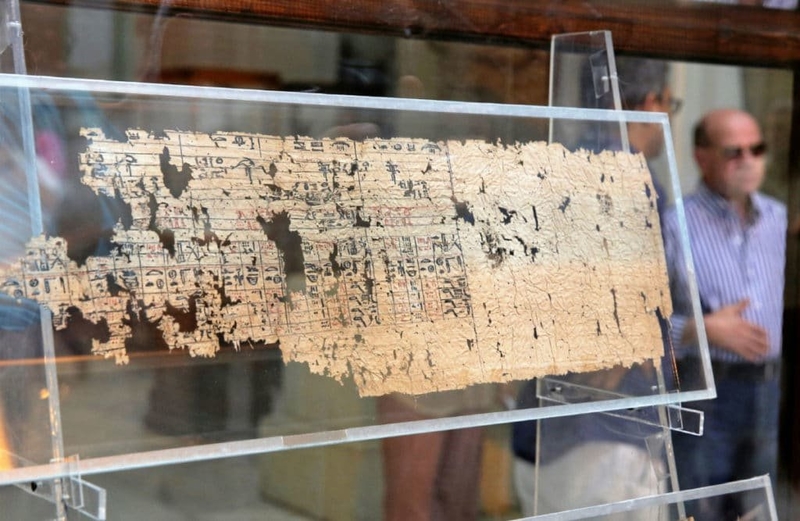
The hieroglyphic text revealed details of the construction of the pyramids that archeologists and historians had only previously speculated on. They now had substantial proof that confirmed an old mystery. So who uncovered this game-changing artifact?
History Maker
Pierre Tallet was the person who made this notable discovery. After finding the ancient papyrus, he deciphered the hieroglyphics for almost half a decade and worked out exactly what was written there.
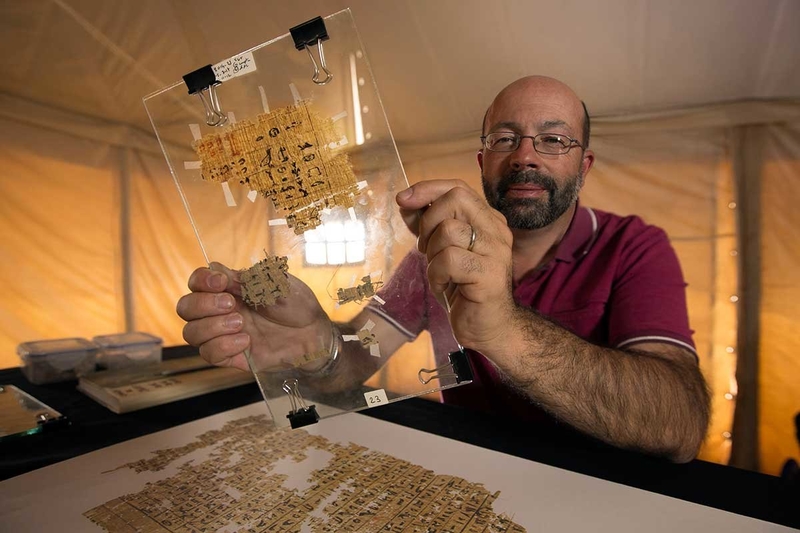
“Since the very day of the discovery, it was quite evident that we have the oldest papyrus ever found in the world,” he said. He knew with his amazing find that he had changed the face of Egyptology. But what was the actual truth behind this amazing artifact?
The Diary Of Merer
An ancient Egyptian named Merer wrote an intricate text describing how the Egyptian workforce behind the Great Pyramid was made up of an incredible number of skilled engineers. According to him, these workers used boats to transport more than 170,000 tons of limestone from Tura to Giza down the Nile.
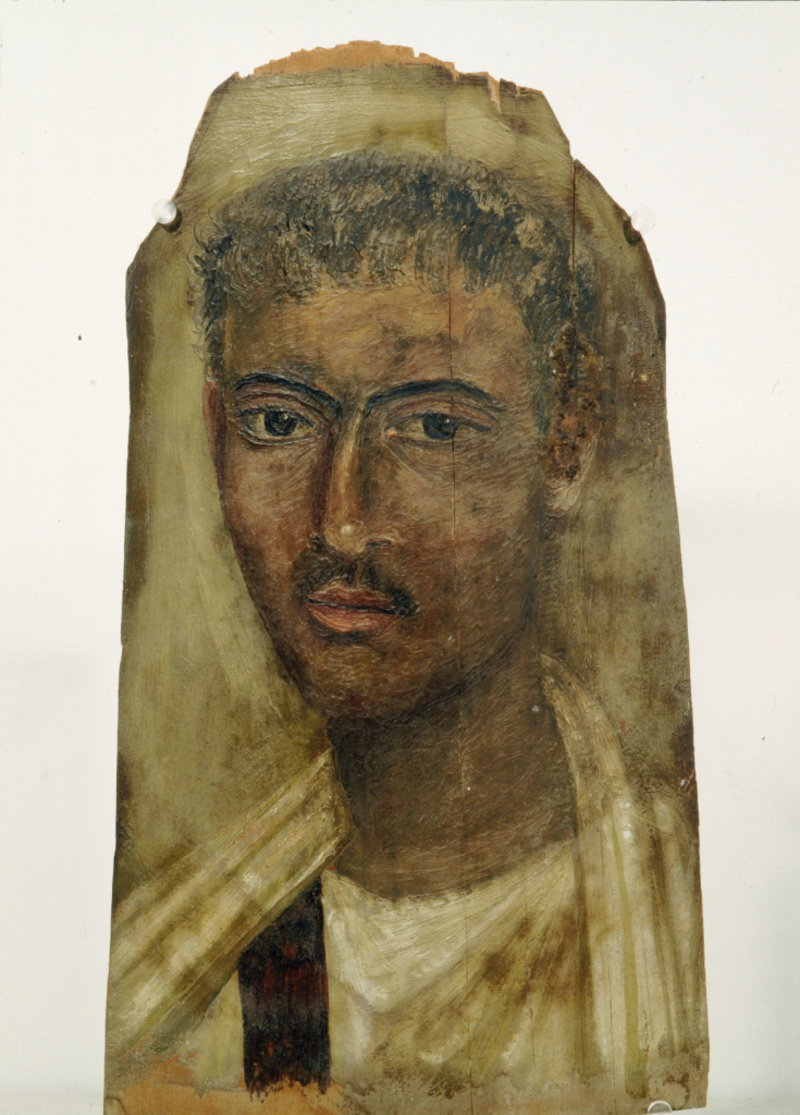
This finally served as the first written account in history for Egyptologists. But there was another astounding detail that makes this engineering wonder even more impressive.
Man Made Canals
The other incredible thing Merer wrote about was a complex channel system. The pyramid engineers built the series of canals to make the transport of materials as quick and efficient as possible. These canals connected directly from the Nile to the area on which the pyramids were built.
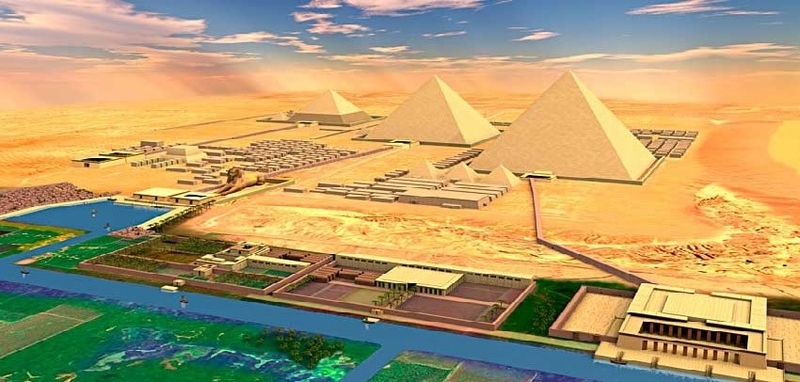
Where then did the materials come from exactly? Merer not only painted a clear picture of the building techniques but also revealed the important figures behind the project.
The Pharoah & The Vizier
The Diary of Merer actually revealed a great deal of important and fascinating information about the king’s reign (2600 B.C.), Pharaoh Khufu. His half-brother, ” the noble Ankh-haf,” was also his Vizier and his supervision of the construction of the Great Pyramid was confirmed.
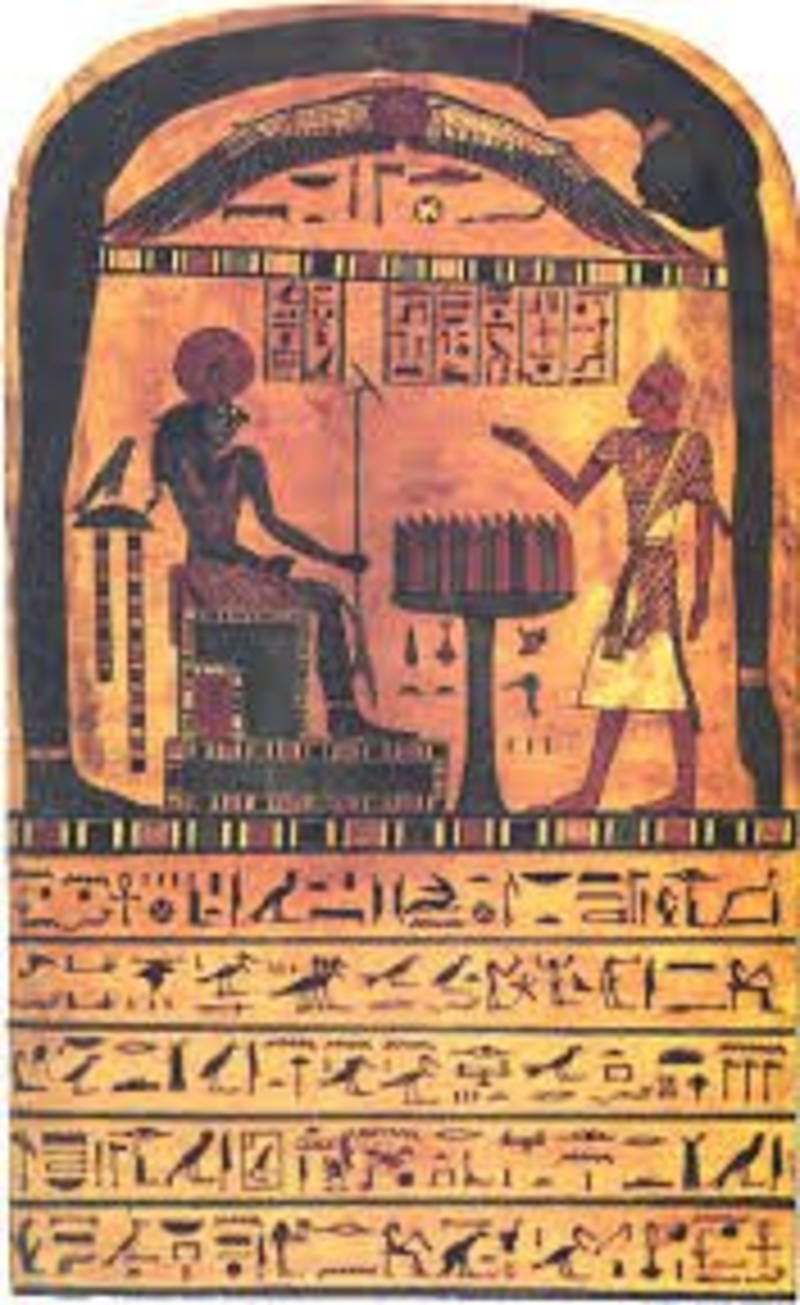
The text suggests that it was Khufu himself who instructed the engineers to decorate the Pyramid with Tura limestone, his soon-to-be tomb. But it was someone else that helped realize the dream of Tallet.
Most Recent Development
This indirect and collaborative effort was finished by Mark Lehner. Lehner and his team found the lost waterway in Giza, which only adds credence to the details in Merer’s diary.

Lehner said, “We’ve outlined the central canal basin which we think was the primary delivery area to the foot of the Giza Plateau.” Now researchers have three key sources of evidence to prove the origins of the Pyramids with the Diary of Merer, the Khufu ship, and now the lost waterway.
The Undisputed Truth
Tallet, Lehner and the others have therefore been able to verify a list of important facts that have only been heard for hundreds of years. Most importantly, the Diary of Merer confirms that the boats and canals played an integral role in the construction of the Pyramids of Giza.
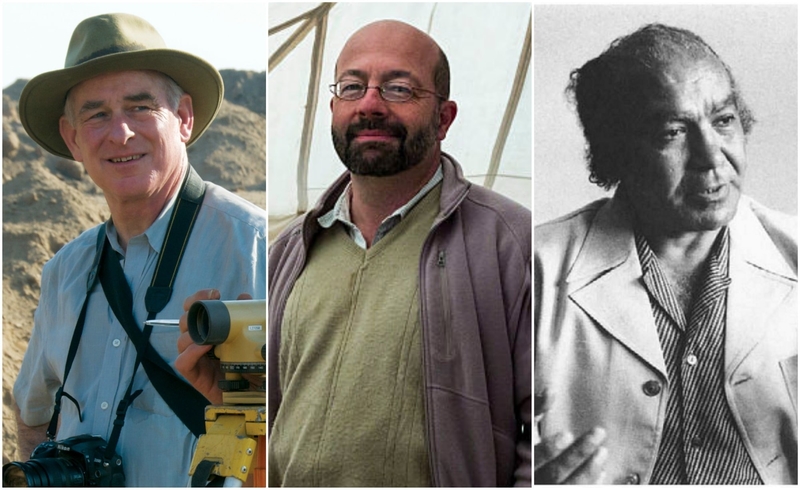
The two most important materials of the structure, granite and calcareous, were also brought from Aswan and Tura respectively. What do these details mean for Egyptology ‘s future?
The Future Of Egyptology
These three separate findings are strongly linked and seem to add a new level of significance to the theories that Egyptologists such as Herodotus, Gerry Cannon, and Miroslav Verner have developed over the years.
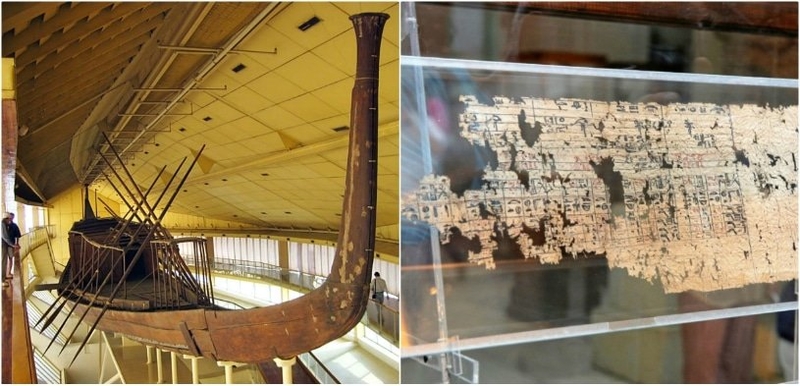
Despite these pioneering findings, the search for the hidden truths of ancient Egypt continues. It seems, however, that some of the deepest secrets about the Great Pyramids have finally been unlocked, inspiring archeologists to duplicate their efforts and unravel the next major breakthrough in Egypt.

Alexander Graham Bell: Compressing The Planet Into Our Palms

Increase Your Dopamine Levels in 4 Simple Steps

What’s Worth Knowing About Animal Intelligence

How Different Animals Behave During a Solar Eclipse

This Viral Challenge Has People Recreating Famous Paintings and the Results Are Spectacular

Menu Items You Should Definitely Avoid

Planes That Have Should Never Been Built

More Discoveries That Will Change How You Look at History

These Celebrity Doppelgängers Will Change Your Mind About Time Travel

More Astonishing Photographs Taken By Flying Drones






















